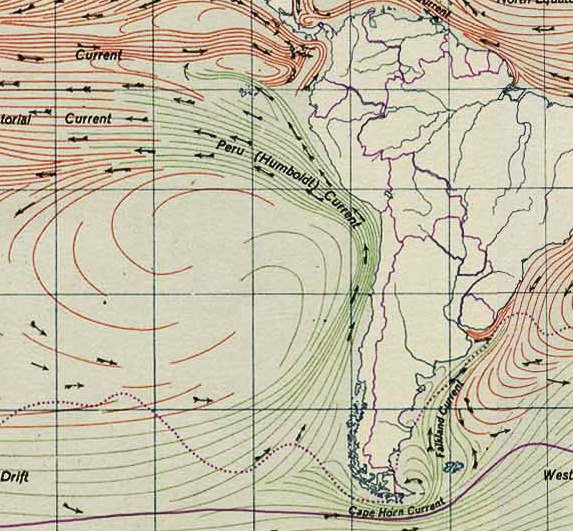Riding the Ocean Currents

The expedition headquarters of Fedor Konyukhov received numerous questions related to why the boat Tourgoyak is heading the northwest instead of directly west, which would be a shorter route. We bring you the comments from the experts of the Ocean Rowing Society International (London, UK).
“Any route of crossing the ocean be it under the sail or on oars depends on the ocean currents and prevailing directions of the winds. The ocean rowers – even more so than the sailors – rely and depend on these two factors. Rowers would capture the current right at the start or navigate their way to eventfully merge with the current. Therefore, neither first nor second approach allow for a straight route.
In the Atlantic, the best illustration of this “curvature” of the route is seen in the way Columbus sailed to the shores of the New World. Coming out of Spain and Portugal, the caravels first went south to the Canary Islands, following the Canary Current reaching almost to the Cape Verde Islands. From there they entered the Trade Winds and the North Equatorial Current that would allow them to cross the Atlantic from east to west. On the way home, from west to east, they had to catch the Gulf Stream which took them north across the Atlantic. From there they had to head back to Spain.
In the Pacific Ocean, the Peruvian Current (Humboldt) passes along the coast of South America from south to north. It is one of the largest ocean currents in the world. Fedor’s goal was to catch the Peruvian Current and ride to 15-20 degree of the Southern Latitude. There he will enter the zone of the southerly Trade Winds which will allow him to turn west towards Australia.

A map of the Pacific Ocean currents clearly shows that one can arrive to Australia by means of the Trade Winds while slowly navigating south. Fedor will have to work hard to not be caught up in the the East Australian Current which would divert him to New Zealand. However, if Fedor lingers too much in the Trade Winds there will be a high risk of getting swept into the Equatorial Current which would turn him back to south-east.
An ocean row boat can not go against the current nor against the wind. No matter how incomprehensible his “indirect” route may seem to us, Fedor as an experienced sea explorer knows that this route is logical, practical, and therefore, the only possible route to navigate between South America and Australia.
During the first two weeks, as the distance from the start grew large so did the distance to the finish line. This, as we have seen, is understandable: Fedor is moving to Australia in an arc, repeating the main direction of the currents.
On the eleventh day (January 2, 2014) of his transpacific crossing, Fedor was 534 nautical miles away from Concon and 6523 miles from Brisbane, Australia, which means turning north added 137 miles to the distance between Fedor and the finish. However, after January 5th, the distance finally started to decrease. The last time we spoke with Fedor the distance was 6482 nautical miles.
The map of the Tourgoyak’s course: http://yb.tl/konyukhov2
The detailed map of the course: www.oceanrowing.com/Konyukhov/Pacific2013/dist_map.htm
The Ocean Rowing Society International
Translated by Tatiana Koreski